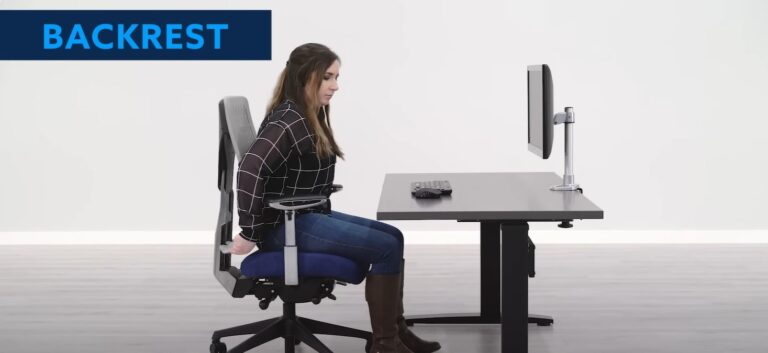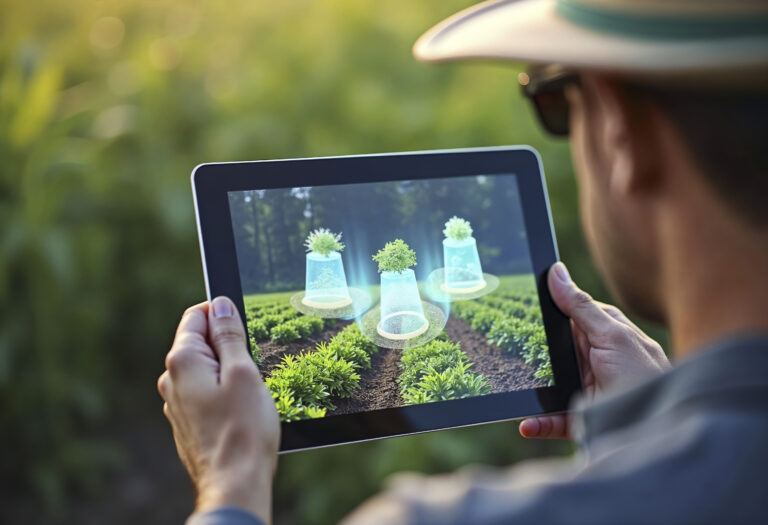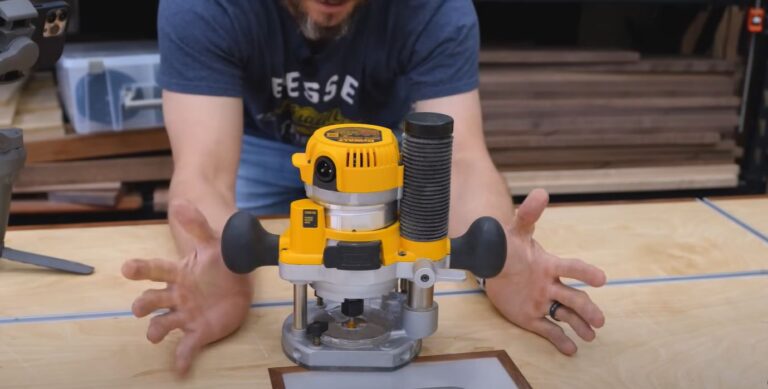Step-by-Step Guide to Preparing Nutritious and Safe Pureed Foods for Elderly Individuals with Swallowing Difficulties
Pureed foods are often essential for elderly individuals who experience difficulty chewing or swallowing, a condition known as dysphagia.
This can result from aging, medical conditions like stroke or Parkinson’s disease, or dental issues. Preparing pureed foods that are nutritious, safe, and appetizing requires careful planning and attention to detail.
This guide outlines the process, from selecting ingredients to serving and storing, ensuring the food meets both health and sensory needs.
Additionally, a Frequently Asked Questions (FAQs) section and quick-reference tables provide further clarity for caregivers.
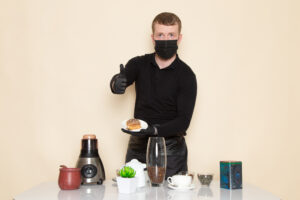
1. Choose Nutrient-Dense Ingredients
Selecting the right ingredients is the foundation of preparing pureed foods that are both palatable and nutritionally balanced. Elderly individuals often have specific dietary requirements, such as low sodium for heart conditions or low sugar for diabetes management.
- Vegetables: Opt for soft, easily blendable options like carrots, peas, spinach, or zucchini. These are rich in vitamins and minerals, such as vitamin A from carrots or iron from spinach, which support overall health.
- Fruits: Choose ripe or cooked fruits like bananas, avocados, or stewed apples. These provide natural sweetness and nutrients like potassium and vitamin C.
- Proteins: Include lean proteins such as poached chicken, baked fish (e.g., cod or tilapia), or plant-based options like tofu or mashed beans. Protein is crucial for maintaining muscle mass and strength.
- Grains: Cooked oatmeal, rice, or quinoa can add carbohydrates for energy. These also help achieve a smoother texture when pureed.
- Considerations: Always check for dietary restrictions. For example, avoid high-fiber vegetables like broccoli for those with digestive sensitivities unless well-cooked and strained.
Tip: Consult a healthcare provider or dietitian to tailor ingredient choices to the individual’s medical needs, such as gluten-free options for celiac disease.
Recommended Ingredients for Pureed Foods
| Category | Examples | Nutritional Benefit |
|---|---|---|
| Vegetables | Carrots, Peas, Spinach | Vitamins A, C, Iron |
| Fruits | Bananas, Avocados, Stewed Apples | Potassium, Vitamin C |
| Proteins | Chicken, Fish, Tofu | Muscle maintenance, Protein |
| Grains | Oatmeal, Rice, Quinoa | Energy, Carbohydrates |
2. Cook Foods Thoroughly
Proper cooking ensures ingredients are soft enough to blend smoothly and are easier to digest, which is critical for elderly individuals with swallowing difficulties.
- Cooking Methods: Steam, boil, or bake ingredients to soften them. For instance, steam carrots for 15-20 minutes until they are fork-tender, or bake sweet potatoes at 375°F (190°C) for 45 minutes until soft.
- Preparation: Remove skins, seeds, or tough fibers (e.g., from celery or asparagus) before cooking to ensure a smooth puree. For meats, trim fat and remove bones to avoid gristle.
- Safety Note: Overcooking is better than undercooking for purees, as it reduces the risk of lumps that could pose a choking hazard.
Tip: Use a pressure cooker or slow cooker to save time and achieve consistent softness, especially for tougher vegetables or meats.
Table 2: Cooking Methods for Pureed Foods
| Method | Time (e.g., Carrots) | Best For |
|---|---|---|
| Steaming | 15-20 minutes | Vegetables, Fish |
| Boiling | 10-15 minutes | Grains, Root Vegetables |
| Baking | 30-45 minutes | Sweet Potatoes, Chicken |
3. Blend to a Smooth Consistency
Achieving the right texture is critical for safe swallowing. The puree should be smooth, lump-free, and resemble a pudding-like consistency to minimize choking risks.
- Equipment: Use a high-powered blender, food processor, or immersion blender for best results. Lower-powered appliances may leave lumps, which can be dangerous.
- Liquid Addition: Gradually add liquids like water, low-sodium broth, milk, or fruit juice to achieve the desired consistency. Start with small amounts (e.g., 1-2 tablespoons) and adjust based on thickness. For example, add vegetable broth to pureed carrots for a savory flavor.
- Straining: For individuals with severe dysphagia, pass the puree through a fine mesh strainer to remove any remaining particles.
- Texture Guidelines: Follow medical advice, as some individuals may require specific consistencies, such as Level 4 (pureed) or Level 5 (minced and moist) per the International Dysphagia Diet Standardisation Initiative (IDDSI).
Tip: Test the puree by spreading it on a plate; it should hold its shape but flow smoothly when tilted.
4. Season Lightly
Flavor enhances appetite, but elderly individuals often have sensitive palates or dietary restrictions that require careful seasoning.
- Mild Seasonings: Use herbs like parsley, thyme, or basil, or mild spices like cinnamon or nutmeg, to add flavor without overwhelming the dish. For example, a pinch of cinnamon can enhance pureed apples.
- Avoid Irritants: Limit salt, sugar, and spicy ingredients like chili, which may irritate the stomach or exacerbate conditions like acid reflux.
- Taste Testing: Always taste the puree to ensure it’s palatable, keeping in mind that elderly individuals may prefer subtle flavors.
Tip: Experiment with natural flavor boosters like lemon zest or a splash of low-sodium soy sauce for umami, but use sparingly.
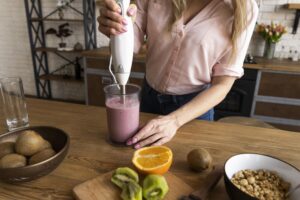
5. Ensure Proper Nutrition
Pureed foods must provide balanced nutrition to support the elderly individual’s health, especially since they may consume smaller portions.
- Macronutrients: Include proteins (e.g., pureed chicken or lentils), carbohydrates (e.g., pureed rice or potatoes), and healthy fats (e.g., avocado or olive oil) in every meal.
- Micronutrients: Ensure adequate vitamins and minerals. For example, pureed spinach provides iron and calcium, while pureed mango offers vitamin C.
- Supplements: If caloric or nutrient needs aren’t met, consider adding protein powder, fortified milk, or nutritional supplements as recommended by a dietitian.
- Portion Control: Elderly individuals may have reduced appetites, so focus on nutrient-dense purees to maximize intake in smaller servings.
Tip: Work with a dietitian to create a meal plan that meets daily caloric needs (typically 1,600-2,000 calories for less active elderly adults, adjusted for weight and health).
6. Serve at Safe Temperatures
Temperature is critical for safety and comfort, as elderly individuals may have reduced sensitivity to heat, increasing the risk of burns.
- Cooling: Allow pureed food to cool to lukewarm or room temperature (around 100°F/38°C) before serving. Use a food thermometer to check if unsure.
- Reheating: If reheating, ensure the food reaches an internal temperature of 165°F (74°C) to kill bacteria, then cool slightly before serving. Stir to distribute heat evenly and avoid hot spots.
- Presentation: Serve in small, manageable portions to avoid overwhelming the individual. Use shallow bowls or plates for easier eating.
Tip: If the individual uses a feeding tube, ensure the puree is thin enough to flow through the tube and is at the recommended temperature per medical guidance.
7. Present Attractively
Visual appeal can stimulate appetite, especially for elderly individuals who may have reduced interest in food.
- Molding: Use silicone molds to shape purees into appealing forms, such as a scoop of pureed chicken resembling a meatball or pureed carrots in a circular mold.
- Garnishing: Add a sprinkle of finely chopped herbs or a drizzle of sauce (e.g., a smooth tomato coulis) for color, ensuring garnishes are safe to swallow.
- Variety: Serve multiple purees in separate sections of a plate to mimic a traditional meal, such as pureed chicken, mashed potatoes, and peas.
Tip: Use colorful plates or bowls to make the meal more inviting, but avoid overly bright colors that may be visually overwhelming.
8. Store Safely
Proper storage prevents spoilage and ensures the food remains safe and fresh for consumption.
- Refrigeration: Store pureed food in airtight containers in the refrigerator for up to 2 days. Label containers with the preparation date.
- Freezing: For longer storage, freeze purees in portion-sized containers or ice cube trays for up to 1 month. Thaw in the refrigerator overnight before reheating.
- Reheating Safety: Reheat only the portion needed, using a microwave or stovetop, and ensure the food reaches 165°F (74°C). Discard any leftovers that have been reheated once to avoid bacterial growth.
Tip: Use freezer-safe containers and leave space for expansion to prevent cracking. Write the contents and date on labels for easy identification.
Storage Guidelines for Pureed Foods
| Storage Type | Duration | Notes |
|---|---|---|
| Refrigeration | Up to 2 days | Use airtight containers, label with date |
| Freezing | Up to 1 month | Use portion-sized containers, thaw safely |
| Reheating | Single use | Heat to 165°F (74°C), cool to 100°F (38°C) |
What Appliance is Best for Pureeing Food?
The best appliance for pureeing food depends on your needs, such as batch size, ingredient type, and frequency of use. Here are the top options:
1. Countertop Blender
-
Why It’s Great: Countertop blenders are powerful (600–1800 watts) and versatile, capable of pureeing fruits, vegetables, meats, and even frozen ingredients into a smooth consistency. They’re ideal for large batches and handle tough foods like cooked meats or fibrous vegetables.
-
Best For: Families, frequent pureeing, and diverse recipes like soups, smoothies, and baby food.
-
Examples: Vitamix 5200, Ninja BL660, Blendtec Classic 575.
2. Immersion Blender
-
Why It’s Great: Also called hand or stick blenders, immersion blenders (200–600 watts) are lightweight and blend directly in pots or bowls, reducing cleanup. They’re perfect for small batches or pureeing hot soups.
-
Best For: Small portions, quick tasks, or limited kitchen space.
-
Examples: Vitamix Immersion Blender, KitchenAid Cordless Hand Blender.
3. Food Processor
-
Why It’s Great: Food processors (700+ watts) excel at pureeing thicker or drier ingredients, like cooked meats or root vegetables. They’re versatile for chopping, slicing, and pureeing but may not achieve the same smoothness as blenders for liquid-based purees.
-
Best For: Multi-tasking kitchens needing chopping and pureeing capabilities.
-
Examples: Cuisinart Custom 14-Cup, Breville Sous Chef.
4. Baby Food Maker
-
Why It’s Great: These specialized appliances (e.g., BEABA Babycook Neo) combine steaming and blending, preserving nutrients and simplifying baby food prep. They’re less powerful (200–500 watts) but designed for small, smooth purees.
-
Best For: Parents making frequent small batches of baby food.
-
Examples: BEABA Babycook Neo, NutriBullet Baby.
Key Considerations
-
Power: Higher wattage (600+ watts) ensures smoother purees, especially for tough ingredients.
-
Capacity: Choose based on batch size—large pitchers (40–72 oz) for families, smaller cups (12–24 oz) for individuals.
-
Ease of Cleaning: Look for dishwasher-safe parts or self-cleaning features.
-
Versatility: Blenders and food processors offer more functions than baby food makers.
Table 1: Comparison of Appliances for Pureeing Food
|
Appliance |
Power (Watts) |
Best For |
Pros |
Cons |
|---|---|---|---|---|
|
Countertop Blender |
600–1800 |
Large batches, versatile |
Smooth purees, powerful |
Bulky, may struggle with small batches |
|
Immersion Blender |
200–600 |
Small batches, hot soups |
Portable, easy to clean |
Less powerful, manual effort |
|
Food Processor |
700+ |
Thicker purees, multi-tasking |
Versatile, large capacity |
Less smooth for liquids |
|
Baby Food Maker |
200–500 |
Baby food, small batches |
Steams and blends, compact |
Limited versatility, small capacity |
What is the Best Thing to Use to Puree Food?
The best tool for pureeing food is a high-powered countertop blender like the Vitamix 5200, which offers superior performance for achieving silky-smooth purees across a wide range of ingredients. Here’s why:
-
Power and Blades: With 1380 watts and stainless steel blades, it effortlessly purees fruits, vegetables, and meats, including tough or fibrous foods.
-
Versatility: Suitable for soups, baby food, smoothies, and sauces, making it a kitchen workhorse.
-
Features: Variable speed control and a tamper ensure precise texture and prevent air pockets, which is critical for thick purees.
-
Durability: A 7-year warranty and robust construction make it a long-term investment.
Alternatives
-
Immersion Blender: Best for small batches or hot liquids, like pureeing soup directly in the pot.
-
Food Processor: Ideal for thicker purees or when chopping/slicing is also needed.
-
Baby Food Maker: Perfect for parents prioritizing nutrient retention and ease of use.
What Equipment is Needed to Puree Food?
To puree food effectively, you need the following equipment:
-
Blender or Food Processor: A countertop blender (600+ watts) or food processor (700+ watts) is essential for most pureeing tasks. Immersion blenders work for smaller or hot batches.
-
Cutting Board and Knife: For prepping ingredients by removing skins, seeds, or bones.
-
Steamer or Pot: To soften hard ingredients like carrots or meats before pureeing.
-
Measuring Cups/Spoons: To add the right amount of liquid (e.g., water, broth, milk) for desired consistency.
-
Sieve or Strainer: For ultra-smooth purees, especially for babies or dysphagia diets, to remove seeds or fibers.
-
Airtight Containers: For storing purees in the fridge (up to 3 days) or freezer (up to 8 months).
-
Spatula: To scrape down blender sides or transfer purees.
Optional: A tamper (included with some blenders like Vitamix) helps push ingredients toward blades for even blending.
Which Blender is Best for Puree?
The Vitamix 5200 is widely regarded as the best blender for pureeing food due to its power, durability, and versatility. Here are top picks for 2025:
1. Vitamix 5200
-
Power: 1380 watts
-
Features: 64-oz pitcher, variable speed control, tamper, stainless steel blades, 7-year warranty.
-
Why It’s Best: Excels at creating silky purees for soups, baby food, and sauces. Its tamper prevents air pockets, and the powerful motor handles tough ingredients like meat or frozen fruit.
-
Best For: Frequent users, large batches, professional results.
2. Ninja BL660 Professional
-
Power: 1100 watts
-
Features: 72-oz pitcher, single-serve cups, Total Crushing Technology, pulse function.
-
Why It’s Great: Affordable and versatile, it purees fruits, vegetables, and softer meats smoothly. Single-serve cups are ideal for baby food.
-
Best For: Budget-conscious users, small or large batches.
3. Blendtec Classic 575
-
Power: 1560 watts
-
Features: 90-oz jar, pre-programmed cycles, blunt blades, 8-year warranty.
-
Why It’s Great: Its powerful motor and preset puree mode ensure consistent results for soups and baby food.
-
Best For: Hands-off blending, large families.
4. NutriBullet Pro 900
-
Power: 900 watts
-
Features: 24-oz cups, stainless steel extractor blade, compact design.
-
Why It’s Great: Perfect for small batches of baby food or single servings, it purees fruits and vegetables efficiently but struggles with very tough ingredients.
-
Best For: Small kitchens, occasional use.
5. KitchenAid K400
-
Power: 1200 watts
-
Features: 56-oz pitcher, 5-speed settings, puree preset, Soft Start feature.
-
Why It’s Great: Intuitive controls and a preset puree mode make it user-friendly for soups and baby food.
-
Best For: Beginners, mid-sized batches.
Table 2: Top Blenders for Pureeing
|
Blender |
Power (Watts) |
Capacity (oz) |
Key Features |
Best For |
|---|---|---|---|---|
|
Vitamix 5200 |
1380 | 64 |
Variable speeds, tamper, durable |
Large batches, professional use |
|
Ninja BL660 |
1100 | 72 |
Total Crushing, single-serve cups |
Budget, versatile batch sizes |
|
Blendtec Classic 575 |
1560 | 90 |
Preset cycles, blunt blades |
Hands-off, large families |
|
NutriBullet Pro 900 |
900 | 24 |
Compact, extractor blade |
Small batches, portability |
|
KitchenAid K400 |
1200 | 56 |
Puree preset, Soft Start |
Beginners, mid-sized batches |
Can I Use a Regular Blender to Puree?
Yes, a regular blender (countertop or personal, 600+ watts) is suitable for pureeing food, including baby food, soups, and sauces. Most standard blenders, like the Ninja BL660 or NutriBullet Pro 900, can achieve the smooth, lump-free consistency needed for purees, provided you follow proper techniques.
How to Use a Regular Blender for Pureeing
-
Prepare Ingredients: Wash, peel, and chop fruits, vegetables, or meats. Steam or cook hard ingredients (e.g., carrots, chicken) to soften them.
-
Add Liquid: Use a 1:4 liquid-to-solid ratio (e.g., 1 tbsp water per 4 tbsp food) to aid blending. Options include water, broth, milk, or juice.
-
Blend in Stages: Start on low speed or pulse to chop, then blend on high for 1–2 minutes. Scrape down sides as needed.
-
Strain for Smoothness: For babies or dysphagia diets, strain through a fine mesh sieve to remove seeds or fibers.
-
Clean Immediately: Wash with hot, soapy water or use the dishwasher to prevent bacterial growth.
Limitations
-
Small Batches: Some countertop blenders struggle with small portions, as ingredients may not reach the blades.
-
Hot Liquids: Not all blenders handle hot foods safely; check for a thermal control jar or use an immersion blender.
-
Power: Low-wattage blenders (<500 watts) may leave chunks or overheat with tough ingredients like raw vegetables or meats.
Safety Tips
-
Use BPA-Free Pitchers: Ensure the blender’s container is safe for food, especially for babies.
-
Avoid Overheating: Blend in short intervals (30–60 seconds) to prevent motor strain.
-
Check Manufacturer Guidelines: Confirm the blender is suitable for pureeing specific foods, like meats.
Is NutriBullet or Ninja Better?
Both NutriBullet and Ninja offer excellent blenders for pureeing, but their suitability depends on your needs. Here’s a detailed comparison:
NutriBullet (Pro 900)
-
Power: 900 watts
-
Capacity: 24-oz cups
-
Pros:
-
Compact and portable, ideal for small kitchens or single servings.
-
Excels at pureeing soft fruits, vegetables, and small batches of baby food.
-
User-friendly with one-touch operation and easy-to-clean cups.
-
-
Cons:
-
Struggles with tough ingredients like raw vegetables or meats due to lower power.
-
Smaller capacity limits batch sizes.
-
Not ideal for hot liquids or large batches.
-
-
Best For: Small portions, smoothies, baby food, or portability.
Ninja (BL660 Professional)
-
Power: 1100 watts
-
Capacity: 72-oz pitcher, 16-oz single-serve cups
-
Pros:
-
More powerful, handling tougher ingredients like cooked meats or frozen fruits.
-
Larger pitcher for family-sized batches, plus single-serve cups for versatility.
-
Total Crushing Technology ensures smooth purees.
-
-
Cons:
-
Bulkier, taking up more counter space.
-
Louder operation compared to NutriBullet.
-
Slightly more complex to clean due to fixed blades in the pitcher.
-
-
Best For: Large batches, tougher ingredients, multi-purpose use.
Verdict
-
Choose NutriBullet Pro 900 if you prioritize compact size, portability, and small-batch pureeing for baby food or personal use.
-
Choose Ninja BL660 if you need versatility, larger capacity, or the ability to puree tougher foods like meats or frozen ingredients.
-
User Feedback: Posts on X suggest NutriBullet is effective but harder to clean for sticky ingredients like butter, while Ninja is praised for power.
Table 3: NutriBullet vs. Ninja Comparison
|
Feature |
NutriBullet Pro 900 |
Ninja BL660 Professional |
|---|---|---|
|
Power (Watts) |
900 | 1100 |
|
Capacity (oz) |
24 |
72 (pitcher), 16 (cups) |
|
Best For |
Small batches, portability |
Large batches, tough ingredients |
|
Pros |
Compact, easy to use |
Powerful, versatile |
|
Cons |
Limited capacity, less power |
Bulkier, louder |
|
Price (Approx.) |
$90 | $100–$120 |
What is Better Than NutriBullet?
For pureeing, several blenders outperform the NutriBullet Pro 900 (900 watts) due to higher power, larger capacity, or advanced features:
1. Vitamix 5200
-
Why Better: With 1380 watts, a 64-oz pitcher, and a tamper, it produces smoother purees for all ingredients, including meats and frozen fruits. Its durability and 7-year warranty outshine NutriBullet’s.
-
Best For: Professional-grade pureeing, large batches.
2. Blendtec Classic 575
-
Why Better: A 1560-watt motor and pre-programmed cycles ensure consistent purees, even for tough foods. Its 90-oz jar is ideal for families, unlike NutriBullet’s 24-oz cups.
-
Best For: Hands-off operation, large volumes.
3. Ninja Foodi Power Blender & Processor System
-
Why Better: With 1200 watts and a 72-oz pitcher, it handles larger batches and tougher ingredients than NutriBullet. It also includes food processor functions, adding versatility.
-
Best For: Multi-tasking kitchens.
Why They’re Better
-
Power: Higher wattage (1200–1560 vs. 900) ensures smoother purees for tough foods.
-
Capacity: Larger pitchers (64–90 oz vs. 24 oz) suit family-sized batches.
-
Features: Variable speeds, tampers, or preset modes offer more control than NutriBullet’s one-touch operation.
Table 4: Blenders Better Than NutriBullet
|
Blender |
Power (Watts) |
Capacity (oz) |
Why Better |
|---|---|---|---|
|
Vitamix 5200 |
1380 | 64 |
Power, tamper, durability |
|
Blendtec Classic 575 |
1560 | 90 |
High power, preset cycles |
|
Ninja Foodi |
1200 | 72 |
Versatile, food processor |
Can You Use Frozen Fruit in the NutriBullet?
Yes, you can use frozen fruit in the NutriBullet Pro 900 for pureeing, but there are limitations and best practices to ensure smooth results and prevent damage:
Guidelines for Using Frozen Fruit
-
Cut into Small Pieces: Chop frozen fruit into 1-inch pieces to reduce strain on the 900-watt motor.
-
Add Liquid: Use at least 1:4 liquid-to-solid ratio (e.g., water, milk, juice) to create a vortex and aid blending.
-
Blend in Short Bursts: Pulse for 10–15 seconds, then blend for 30–60 seconds to avoid overheating.
-
Avoid Overloading: Fill the 24-oz cup no more than two-thirds full to ensure even blending.
-
Check Manual: NutriBullet advises against blending large frozen chunks without sufficient liquid to prevent motor strain.
Limitations
-
Motor Power: The 900-watt motor struggles with large or rock-hard frozen fruit compared to higher-powered blenders like Vitamix (1380 watts).
-
Texture: May leave small chunks or seeds if not blended long enough or strained.
-
Not for Ice: NutriBullet is less effective for crushing large ice cubes, which can dull blades.
Tips for Success
-
Thaw frozen fruit slightly (5–10 minutes) to soften it.
-
Combine with fresh fruit or yogurt for smoother purees.
-
Strain through a sieve for baby food or dysphagia diets.
What Blender is Better Than a Ninja?
While Ninja blenders (e.g., BL660, 1100 watts) are powerful and versatile, the following blenders outperform them for pureeing due to higher power, advanced features, or durability:
1. Vitamix 5200
-
Why Better: 1380 watts, tamper, and variable speed control produce smoother purees, especially for tough foods like meats or frozen fruits. Its 7-year warranty surpasses Ninja’s typical 1–2 years.
-
Best For: Professional kitchens, frequent use.
2. Blendtec Classic 575
-
Why Better: 1560 watts and pre-programmed cycles outperform Ninja’s 1100 watts for consistent purees. Its blunt blades are safer and more durable.
-
Best For: Large batches, hands-off blending.
3. Breville Super Q
-
Why Better: With 1800 watts and noise suppression, it’s more powerful and quieter than Ninja. Its 68-oz pitcher and preset modes excel for soups and purees.
-
Best For: Quiet operation, premium features.
Table 5: Blenders Better Than Ninja
|
Blender |
Power (Watts) |
Capacity (oz) |
Why Better |
|---|---|---|---|
|
Vitamix 5200 |
1380 | 64 |
Power, tamper, durability |
|
Blendtec Classic 575 |
1560 | 90 |
High power, preset cycles |
|
Breville Super Q |
1800 | 68 |
Quiet, powerful, preset modes |
Can You Puree in a Ninja Blender?
Yes, Ninja blenders, such as the Ninja BL660 or Ninja Foodi Power Blender, are excellent for pureeing food, including fruits, vegetables, and cooked meats.
Why Ninja is Great for Pureeing
-
Power: 1000–1200 watts handle tough ingredients like meats or frozen fruits.
-
Total Crushing Technology: Ensures smooth, chunk-free purees.
-
Versatility: Large pitchers (72 oz) for family-sized batches and single-serve cups (16–24 oz) for small portions.
-
Pulse Function: Allows precise control for desired texture.
How to Puree in a Ninja Blender
-
Prepare Ingredients: Cook or soften hard foods (e.g., steam carrots for 10–12 minutes). Cut into 1-inch pieces.
-
Add Liquid: Use a 1:4 liquid-to-solid ratio (e.g., broth, water) to aid blending.
-
Blend: Start with pulse or low speed, then blend on high for 1–2 minutes. Use single-serve cups for small batches.
-
Strain if Needed: For baby food or dysphagia, strain through a sieve for ultra-smooth texture.
-
Clean: Disassemble and clean dishwasher-safe parts immediately.
Limitations
-
Fixed Blades: Harder to clean than removable blades.
-
Noise: Ninja blenders are louder than some competitors (e.g., Breville).
-
Hot Liquids: Check the manual, as some models require cooling before blending.
What Blender Do Most Chefs Use?
Professional chefs often prefer Vitamix blenders, particularly the Vitamix 5200 or Professional Series 750, for their reliability, power, and versatility in pureeing, emulsifying, and more.
Why Chefs Choose Vitamix
-
Power: 1380–1500 watts handle tough ingredients like nuts, meats, and frozen fruits.
-
Durability: Built to last with a 7–10-year warranty, ideal for daily use in professional kitchens.
-
Precision: Variable speed control and tamper allow chefs to achieve exact textures for sauces, purees, and soups.
-
Versatility: Used for purees, nut butters, smoothies, and even heating soups via blade friction.
-
Endorsements: Brands like Vitamix are favored by culinary professionals, as noted in reviews by chefs like Ben Ebbrell of Sorted Food.
Other Blenders Chefs Use
-
Blendtec: Preferred for its preset cycles and high power (1560 watts), used in some commercial settings.
-
Breville Super Q: Gaining popularity for its quiet operation and 1800-watt motor, ideal for fine dining environments.
-
Ninja Foodi: Used by home chefs for its versatility and food processor attachments.
Is KitchenAid or Ninja Blender Better?
Comparing KitchenAid (K400) and Ninja (BL660 Professional) depends on your priorities for pureeing and other tasks:
KitchenAid K400
-
Power: 1200 watts
-
Capacity: 56-oz pitcher
-
Pros:
-
Intuitive controls with a puree preset and Soft Start feature for smooth blending.
-
Quieter operation than Ninja, ideal for home use.
-
Durable, BPA-free pitcher and dishwasher-safe parts.
-
-
Cons:
-
Smaller capacity than Ninja’s 72-oz pitcher.
-
Fewer attachments (no single-serve cups).
-
-
Best For: Beginners, mid-sized batches, quiet operation.
Ninja BL660 Professional
-
Power: 1100 watts
-
Capacity: 72-oz pitcher, 16-oz single-serve cups
-
Pros:
-
Versatile with large pitcher and single-serve cups for small or large batches.
-
Total Crushing Technology ensures smooth purees for tougher ingredients.
-
More affordable than KitchenAid K400.
-
-
Cons:
-
Louder and bulkier than KitchenAid.
-
Fixed blades make cleaning slightly harder.
-
-
Best For: Budget-conscious users, versatile batch sizes.
Verdict
-
Choose KitchenAid K400 for user-friendly controls, quieter operation, and a focus on mid-sized purees like soups or baby food.
-
Choose Ninja BL660 for larger capacity, single-serve options, and better value for tougher ingredients or frequent use.
-
Performance: Both produce smooth purees, but Ninja’s larger capacity and attachments offer more flexibility, while KitchenAid excels in ease of use and noise reduction.
Table 6: KitchenAid vs. Ninja Comparison
|
Feature |
KitchenAid K400 |
Ninja BL660 Professional |
|---|---|---|
|
Power (Watts) |
1200 | 1100 |
|
Capacity (oz) |
56 |
72 (pitcher), 16 (cups) |
|
Key Features |
Puree preset, Soft Start |
Total Crushing, single-serve cups |
|
Pros |
Quiet, user-friendly |
Versatile, affordable |
|
Cons |
Smaller capacity |
Louder, harder to clean |
|
Price (Approx.) |
$250–$300 | $100–$120 |
For pureeing food, a high-powered countertop blender like the Vitamix 5200 is the best appliance due to its power (1380 watts), versatility, and durability, making it ideal for soups, baby food, and sauces.
Alternatives like immersion blenders, food processors, or baby food makers suit specific needs, such as small batches or multi-tasking.
Regular blenders (600+ watts) are effective for pureeing, including NutriBullet and Ninja models, with Ninja BL660 offering better value and capacity than NutriBullet Pro 900.
Frozen fruit can be used in NutriBullet with proper techniques, but higher-powered blenders like Vitamix or Blendtec outperform it. Chefs favor Vitamix for professional results, while KitchenAid K400 is quieter and easier to use than Ninja BL660, which excels in versatility and affordability.
Choose your appliance based on batch size, ingredient type, and budget to achieve perfect purees every time.
Frequently Asked Questions (FAQs)
Q: What is the best appliance for pureeing food?
A: A high-powered blender or food processor is ideal for achieving a smooth, lump-free texture. Immersion blenders work well for smaller batches but may require more effort to ensure consistency.
Q: How can I make pureed food taste better without adding salt?
A: Use mild herbs (e.g., parsley, thyme), spices (e.g., cinnamon, nutmeg), or natural flavor enhancers like lemon zest or a splash of low-sodium broth. Always taste-test to ensure palatability.
Q: Can I puree regular meals from the family table?
A: Yes, but ensure the meal is cooked until very soft and free of tough textures (e.g., gristle, seeds). Adjust seasoning and blend with appropriate liquids to achieve a safe consistency.
Q: How do I know if the puree is the right consistency?
A: The puree should be smooth, pudding-like, and hold its shape but flow when tilted. For dysphagia patients, follow IDDSI guidelines (e.g., Level 4 for pureed) and consult a speech-language pathologist.
Q: Can I freeze pureed foods, and how long do they last?
A: Yes, pureed foods can be frozen in portion-sized containers for up to 1 month. Thaw in the refrigerator overnight and reheat to 165°F (74°C) before serving.
Q: How do I ensure the puree is safe for someone with severe dysphagia?
A: Work with a healthcare professional to determine the correct texture (e.g., IDDSI Level 4). Strain the puree to remove particles, serve at a safe temperature (around 100°F/38°C), and avoid choking hazards like lumps or sticky textures.
Additional Considerations
- Hygiene: Wash hands, utensils, and surfaces thoroughly to prevent contamination. Use clean equipment for each batch to avoid cross-contamination.
- Medical Guidance: Always follow recommendations from a speech-language pathologist or doctor regarding texture and consistency, especially for dysphagia patients.
- Hydration: Ensure the individual stays hydrated, as pureed foods may not provide enough liquid. Offer water, thinned juices, or thickened liquids as prescribed.
- Cultural Preferences: Incorporate familiar or culturally significant foods to make meals comforting and enjoyable, such as pureed versions of traditional dishes.
Conclusion
Preparing pureed foods for elderly individuals requires a balance of nutrition, safety, and appeal.
By selecting nutrient-dense ingredients, cooking thoroughly, blending to the right consistency, and presenting the food attractively, you can create meals that are both enjoyable and supportive of health.
The included tables and FAQs provide quick references to streamline the process. Always consult healthcare professionals to tailor the diet to the individual’s needs and monitor for any changes in swallowing ability or nutritional requirements.
With careful preparation, pureed foods can enhance the quality of life for elderly individuals with chewing or swallowing difficulties.


